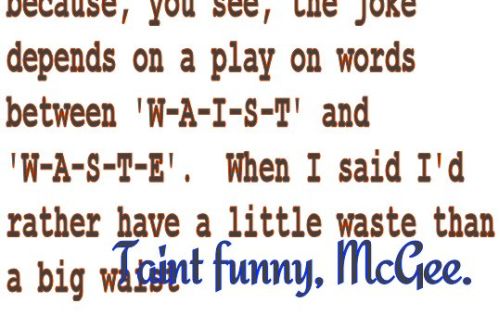Wednesday, December 19, 2012
Can't be funny, McGee
Still wandering through old telegraph material and Wheatstone's wonderful experiments, and my mind is thoroughly involved in those subjects.
When I cooked my usual tomato-ey stuff this afternoon, I absent-mindedly started with too much water, so I had to leave a few spoonfuls in the bowl to avoid getting overfull. For some reason this led to a Fibber and Molly pun, and then to another thought. The pun wasn't worth writing here, but the next thought may be worth writing.
Next thought: In all the centuries we've been writing and printing and typing, we've never developed a way to represent real dialog on paper or screen. Far as I can tell, nobody has even tried! For instance, there's no visual way to show the interrupts and overlaps that make Fibber and Molly funny.
Interrupts and overlaps are easy for our ears to handle. We do it all the time. And we do it equally well with music or Morse code; an experienced operator can distinguish two simultaneous senders if they have distinct styles or if their carriers have different BFO notes. But we can't do it visually.
Technically speaking, interrupts and overlaps could be shown in hand writing or in photo-processed printing, but not in hot lead type or in conventional computer displays. An illuminated manuscript could do it, and an offset-style printing press could do it, and PhotoShop can do it:
 Does it work? I doubt it.
Does it work? I doubt it.
 Does it work? I doubt it.
Does it work? I doubt it.
